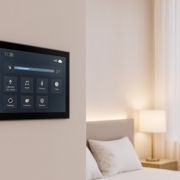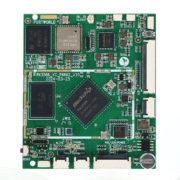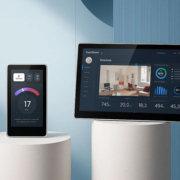What is the Carrier Board?
In the world of embedded systems and modular computing, the term “carrier board” often comes up—especially in discussions about System on Module (SoM) architecture. But what exactly is a carrier board? Why is it essential in modern electronics design? And how does it function in systems like smart home control panels, robotics, or industrial automation?
This article provides a complete overview of the carrier board, its role, design, and advantages in embedded system development.
Definition: What is a Carrier Board?
A carrier board, also known as a baseboard, motherboard, or breakout board, is a custom-designed printed circuit board (PCB) that connects and supports a System on Module (SoM) or Computer on Module (CoM).
While the SoM contains the core computing elements—such as CPU, RAM, and storage—the carrier board provides the physical interfaces and connectors needed to communicate with external devices and peripherals.
Think of it like this:
- SoM = The Brain
- Carrier Board = The Body (and Communication System)
What Does a Carrier Board Do?
A carrier board provides the application-specific infrastructure to a computing module. It:
- Connects interfaces: Includes ports like USB, HDMI, Ethernet, audio jacks, RS232, GPIO, etc.
- Delivers power: Supplies regulated power to the SoM and all peripheral components.
- Enables communication: Bridges between the SoM and devices like sensors, cameras, displays, and networks.
- Houses additional components: Optional elements like Zigbee/Wi-Fi modules, touch controllers, SIM slots, relays, or GPS modules.
Key Features of a Carrier Board
I/O Connectivity
- USB, UART, I2C, SPI, GPIO, CAN bus
- HDMI, LVDS, or MIPI-DSI for display output
- Ethernet or Wi-Fi modules for networking
Power Management
- DC power inputs
- PoE (Power over Ethernet) support in advanced designs
- Voltage regulators and protection circuits
Physical Mounting
- Mounting holes, headers, and board-to-board connectors
- Form factor compatibility (custom, Mini-ITX, Pico-ITX, etc.)
Peripheral Expansion
- Slots for storage (microSD, M.2, SATA)
- Camera inputs (CSI)
- Audio in/out jacks
Real-World Example: Smart Home Control Panel
Take the Portworld 4-inch or 5-inch smart home control panel as a use case:
The SoM handles processing, Android OS, and memory.
The carrier board provides:
- Zigbee or Wi-Fi wireless communication
- HDMI or LVDS output to the touch screen
- PoE support for simplified wiring
- GPIO pins for sensors or alarms
- Microphone/speaker jacks for voice control
This separation of core and peripheral logic enables Portworld to offer customizable smart panels for different home automation needs, without redesigning the entire system.
Advantages of Using a Carrier Board
- Customization
- The carrier board can be tailored to specific applications—industrial, consumer, medical, etc.—while keeping the same core module.
- Scalability
- You can upgrade the SoM (e.g., to a faster CPU or more RAM) without changing the rest of the hardware.
- Faster Development
- Developers can focus on peripheral design and skip the complex design of CPU, memory, and boot firmware, which is handled on the SoM.
- Reduced Risk
- Separating critical computing and I/O design minimizes the risk of hardware failure and simplifies certification (e.g., for wireless).
Who Designs the Carrier Board?
In most embedded system projects:
- The SoM is sourced from a hardware vendor (like Portworld, Toradex, or NVIDIA Jetson).
- The carrier board is custom-designed by the product manufacturer or engineering partner to suit their product’s needs.
Many vendors also offer reference carrier boards to help accelerate product prototyping and testing.
The carrier board is a vital part of modern embedded systems, providing the bridge between the computing module and the real-world application. It allows product developers to quickly build smart, connected, and high-performance solutions across industries—from home automation and industrial controls to medical equipment and robotics.









